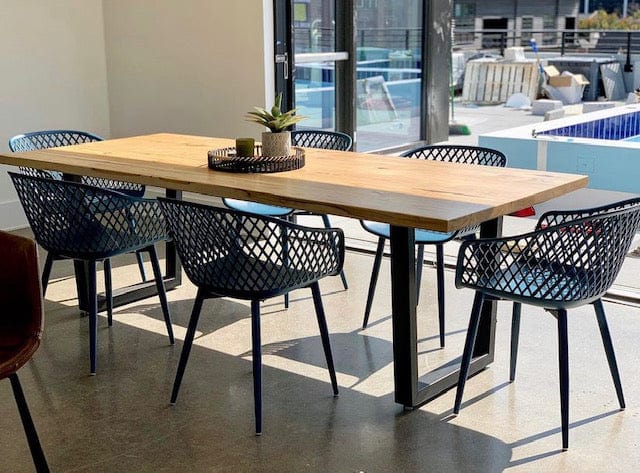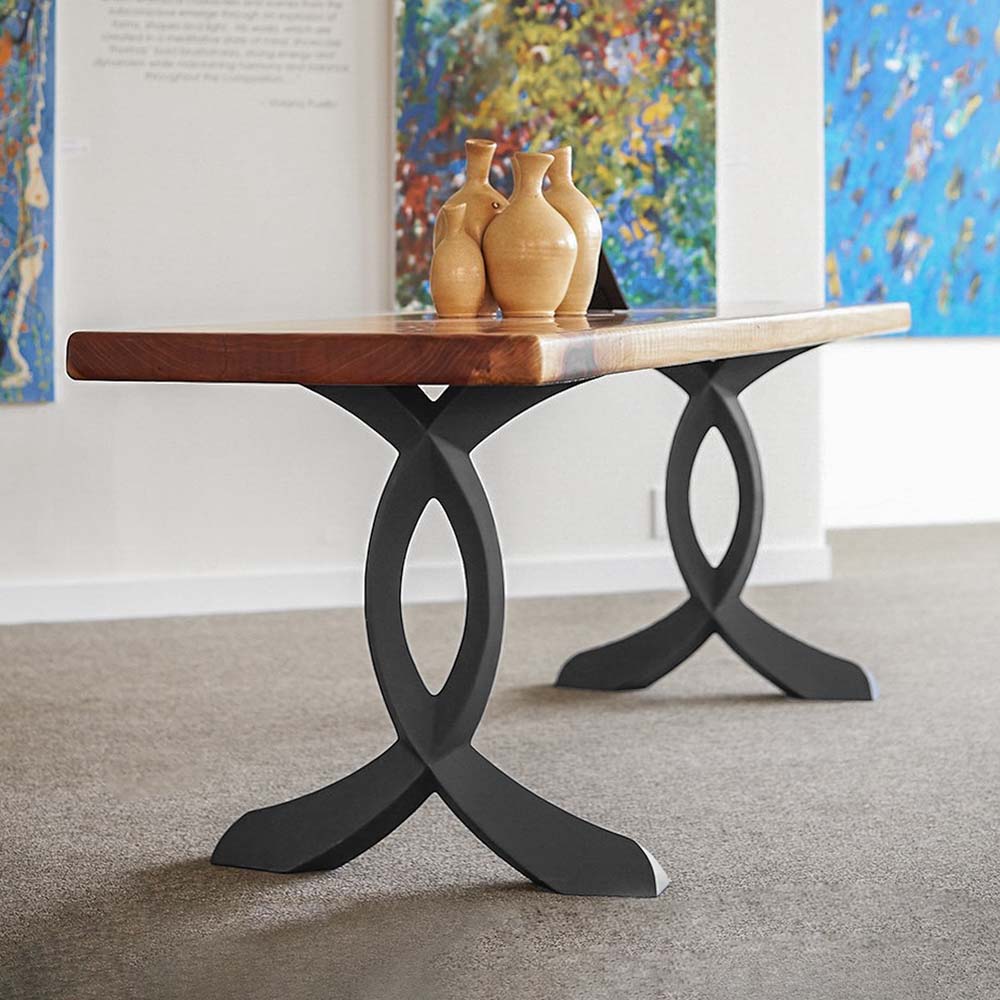Distinct Dining Room Table Legs to Transform Your Eating Location
Distinct Dining Room Table Legs to Transform Your Eating Location
Blog Article
An In-depth Appearance at Dining Table Leg Styles: Finding the Perfect Match
Picking the best eating table leg style is critical for both aesthetic charm and functional performance. For those with bigger tables, trestle legs guarantee strong support, whereas hairpin legs introduce a mid-century modern-day vibe with their minimalist layout. The x-shaped legs blend contemporary style with enhanced stability.
Typical Four Legs
Amongst the numerous kinds of eating table leg styles, the conventional four-leg design continues to be a timeless selection for several families. 4 legs give balanced support, ensuring the table remains secure and qualified of bearing substantial weight (dining room table legs).
From a visual point of view, the typical four-leg design can be conveniently adjusted to different interior designs. Whether crafted from timber, metal, or a combination of products, these legs can be elaborately carved, smooth and minimalistic, or anything in between. Their adaptability enables them to complement both rustic and modern settings perfectly.
Moreover, the straightforward structure of the four-leg layout assists in ease of activity and placement within a room. Unlike even more complicated bases, this style decreases blockages, providing enough legroom for diners. In recap, the conventional four-leg dining table leg design weds withstanding elegance with sensible performance, making it a sharp choice for those looking for both form and feature in their dining furnishings.
Stand Base
Often commemorated for its stylish and space-efficient layout, the pedestal base is a notable alternative to the typical four-leg arrangement in eating table leg styles. This unique base typically includes a solitary central column supporting the table top, which can vary in type, from ornately sculpted wood to smooth, modern-day steel. One of the main benefits of the pedestal base is its ability to make the most of legroom and seating adaptability. Without edge legs, diners are paid for better liberty of movement, making it a suitable choice for round and oblong tables that promote more intimate and comprehensive celebrations.
Moreover, the pedestal base's central support can deal with considerable weight, permitting the usage of larger table tops, such as marble or thick wood. This toughness paired with its visual convenience makes the stand base a preferred selection in both typical and contemporary indoor setups. It can flawlessly incorporate with numerous style themes, from classic sophistication to minimal modernity. The central column itself offers a canvas for intricate layouts and imaginative expressions, including an element of visual interest beneath the table. In recap, the stand base combines functionality snappy, making it a fine-tuned and useful option for varied eating environments.
Trestle Legs
Trestle legs supply a robust and classic foundation for eating tables, defined by their straight cross-bracing and durable support light beams. Originating from middle ages times, this design has actually evolved yet maintained its vital structure, making it a perennial fave in both conventional and modern settings. The main trestle beam of light, commonly supported by two or even more vertical articles, uses extraordinary stability, permitting bigger table lengths without the other requirement for additional legs.
A considerable benefit of trestle leg tables is the sufficient legroom they supply. Unlike tables with four corner legs, the lack of blockages at the table's edges supplies unobstructed area for chairs and diners, boosting convenience and ease of access. This makes trestle tables optimal for fitting larger celebrations, whether in a dining-room or a banquet hall.
The aesthetic convenience of trestle legs is significant. Readily available in a variety of materials such as timber, metal, and composite, they can be finished to enhance a wide variety of indoor designs. From rustic farmhouse my latest blog post to streamlined modern-day layouts, trestle legs can be customized to suit private tastes. Their long-lasting allure and practical advantages make trestle legs an engaging choice for those seeking both style and practicality in their dining table.
Hairpin Legs

The allure of hairpin legs hinges on their simpleness and flexibility - dining room table legs. Offered in an array of materials, consisting of steel and brass, they can be finished in various colors to complement various indoor designs. Whether paired with a rustic wooden tabletop or a modern glass surface area, barrette legs effortlessly blend performance with a touch of classic charm
Toughness is an additional notable function of hairpin legs. In spite of their fragile appearance, these legs are engineered to bear considerable weight, making sure the table continues to be stable and protected. In addition, they are reasonably very easy to install, making them a popular choice for DIY enthusiasts and expert furnishings makers alike.
X-Shaped Legs

Constructed from products such as steel, timber, or a combination of both, X-shaped legs can be customized to match various style preferences. Steel legs usually provide a streamlined and industrial feel, perfect for loft-style apartments and contemporary eating spaces. On the various other hand, wood X-shaped legs offer a warmer, a lot more rustic allure, suitable for farmhouse or eclectic insides. The adaptability in materials allows house owners to customize their table to better fit their general layout scheme.
In addition, the engineering behind X-shaped legs ensures even weight distribution, lessening the danger of tottering and boosting resilience. This makes them specifically well-suited for larger table that need extra support. Essentially, X-shaped legs blend functional engineering with modern looks, making them a classic choice for varied dining atmospheres.
Conclusion
An extensive understanding of dining table leg styles reveals the distinct qualities and benefits of each design. Traditional 4 legs supply security and ageless charm, while stand bases offer legroom and a streamlined appearance. Trestle Related Site legs ensure durable assistance for larger tables, and barrette legs present a mid-century contemporary aesthetic. X-shaped legs combine modern layout with improved stability. Selecting the appropriate leg design makes certain both practical and aesthetic satisfaction in any kind of eating area.
Report this page